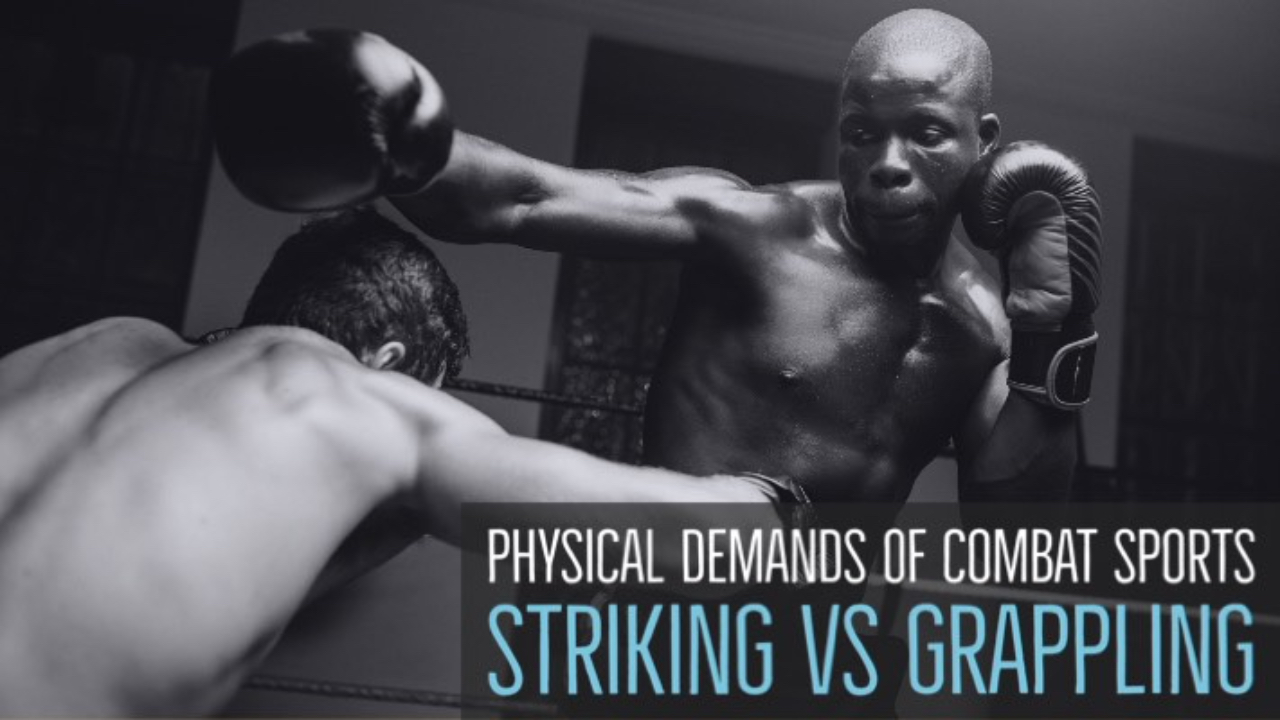
The Physical Demands of Combat Sports: Striking vs Grappling
Striking and grappling sports are two of the most popular combat sports in the world. While both require high levels of physical fitness, they demand different sets of physical attributes. This article will explore the physical demands of striking sports versus grappling sports, including key components, lessons, useful resources, and tips, supported by scientific references.
Key Components of Striking Sports
Speed and agility are the most critical components in striking sports, as they enable fighters to deliver fast and accurate punches, kicks, and knee strikes. Power is also crucial, as it ensures that the strikes have a significant impact on the opponent, while coordination is necessary to maintain balance and footwork during a fight.
To improve speed and agility, fighters can incorporate exercises such as ladder drills, agility cones, and shadowboxing into their training program. Power can be enhanced through strength training exercises such as squats, deadlifts, and bench presses, as well as explosive exercises like medicine ball throws and jump squats. Coordination can be improved through drills that focus on footwork and head movement.
Key Components of Grappling Sports
In grappling sports such as wrestling, Brazilian Jiu-Jitsu (BJJ), and Judo, the key components are strength, endurance, mobility, and explosiveness. Grapplers require a high level of strength, particularly in the upper body and core, to execute techniques such as takedowns, submissions, and throws. Endurance is also crucial for maintaining a high pace during a match, as grappling can be physically demanding and require significant energy expenditure. Mobility is important to facilitate movement and fluidity in techniques, and explosiveness is necessary for quick and explosive movements during takedowns and submissions.
Categories of Exercises for Striking and Grappling Athletes:
-
Mobility: Mobility exercises, such as dynamic stretching, FRC, and yoga, can help improve flexibility, range of motion, and joint mobility. This can be particularly important for grapplers who need to move their bodies in a wide range of motion and maintain good posture.
-
Warm ups: Before any training session, it is essential to include a proper warm-up to prevent injuries and prepare the body for the upcoming activities. Warm-ups can include activities such as jogging, jumping jacks, and shadowboxing.
-
SAQ (Jumping, Throwing, Agility and Sprinting): SAQ drills can help improve speed, agility, and explosive power. Examples of SAQ drills include hurdle jumps, medicine ball throws, agility ladders, and sprints.
-
Strength Work (Squats, Hinge, Lunge, Pushing, Pulling, Carrying and Rotational Exercises): Strength work is essential for both striking and grappling athletes. Exercises such as squats, deadlifts, lunges, push-ups, pull-ups, kettlebell swings, and rotational exercises can help improve strength, power, and explosive movements.
-
Conditioning: Conditioning exercises, such as high-intensity interval training (HIIT), circuits, and cardio sessions, can help improve endurance and cardiovascular fitness.
-
Stretching: Stretching after workouts can help reduce muscle soreness and improve flexibility. Static stretching and PNF stretching are two common types of stretching exercises that can be used for combat sports athletes.
-
Breath Work to Down Regulate and Speed Recovery: Breathing exercises, such as diaphragmatic breathing and box breathing, can help combat sports athletes down-regulate and speed up their recovery process.
In conclusion, striking and grappling sports require different sets of physical attributes, but both require a comprehensive strength and conditioning program that addresses all of these attributes. Mobility, warm-ups, SAQ drills, strength work, conditioning, stretching, and breath work are essential categories of exercises that can help combat sports athletes improve their physical attributes and perform at their best. It is important to work with a qualified coach or trainer who can design a training program that is specific to the needs of each individual athlete.
With proper training and preparation, fighters can maximize their potential and achieve success in the world of combat sports. By incorporating a well-rounded training program that targets all aspects of physical fitness, fighters can improve their speed, power, endurance, and overall performance, regardless of whether they compete in striking or grappling sports.
What types of exercises have you found to be most effective in improving your performance in striking or grappling sports, and why?
-
Häkkinen, K., & Komi, P. V. (1983). Electromyographic changes during strength training and detraining. Medicine and Science in Sports and Exercise, 15(6), 455-460.
-
Kraemer, W. J., & Ratamess, N. A. (2004). Fundamentals of resistance training: progression and exercise prescription. Medicine and Science in Sports and Exercise, 36(4), 674-688.
-
Fry, A. C., & Kraemer, W. J. (1997). Resistance exercise overtraining and overreaching: neuroendocrine responses. Sports Medicine, 23(2), 106-129.
-
Phillips, S. M., & Van Loon, L. J. (2011). Dietary protein for athletes: from requirements to optimum adaptation. Journal of Sports Sciences, 29(sup1), S29-S38.
-
Rhea, M. R. (2004). Determining the magnitude of treatment effects in strength training research through the use of the effect size. Journal of Strength and Conditioning Research, 18(4), 918-920.
-
Wilson, J. M., Marin, P. J., Rhea, M. R., Wilson, S. M., Loenneke, J. P., & Anderson, J. C. (2012). Concurrent training: a meta-analysis examining interference of aerobic and resistance exercises. Journal of Strength and Conditioning Research, 26(8), 2293-2307.
-
American College of Sports Medicine. (2018). ACSM's guidelines for exercise testing and prescription. Wolters Kluwer.
-
National Strength and Conditioning Association. (2016). NSCA's essentials of strength training and conditioning. Human Kinetics.
-
International Society of Sports Nutrition. (2017). Position stand: protein and exercise. Journal of the International Society of Sports Nutrition, 14(1), 20.
-
Hoff, J., & Helgerud, J. (2004). Endurance and strength training for soccer players: physiological considerations. Sports Medicine, 34(3), 165-180.
-
Behm, D. G., & Sale, D. G. (1993). Velocity specificity of resistance training. Sports Medicine, 15(6), 374-388.
-
Gabbett, T. J. (2016). The training-injury prevention paradox: should athletes be training smarter and harder? British Journal of Sports Medicine, 50(5), 273-280.




